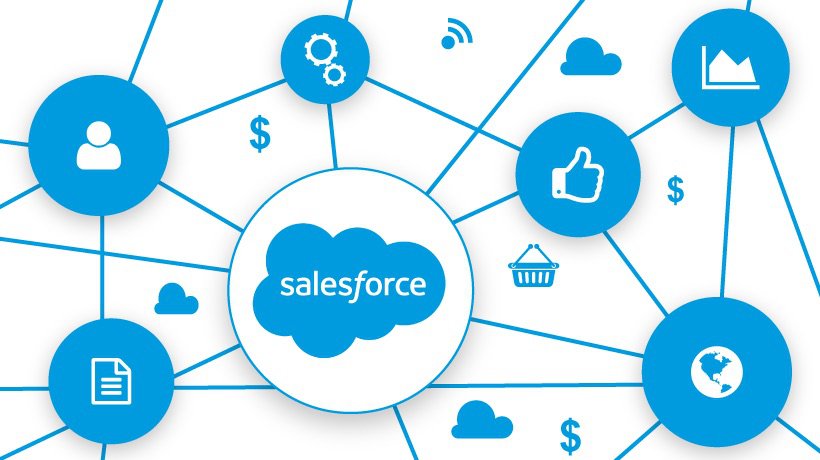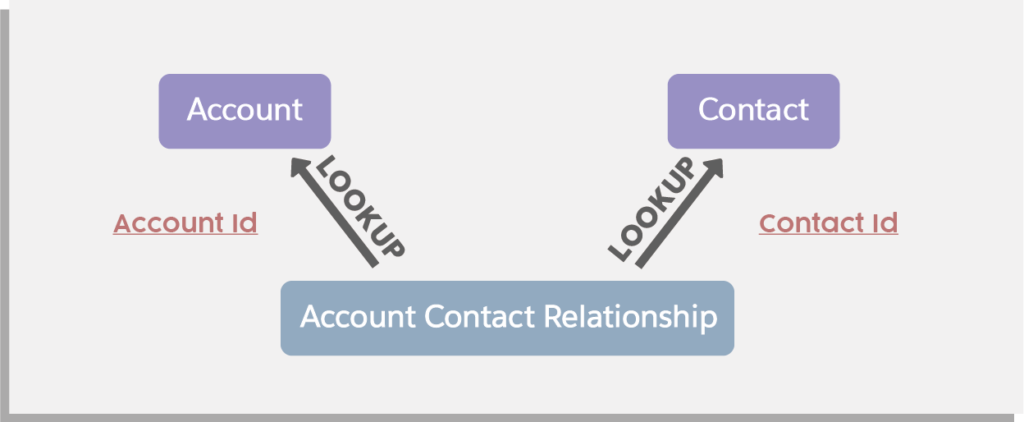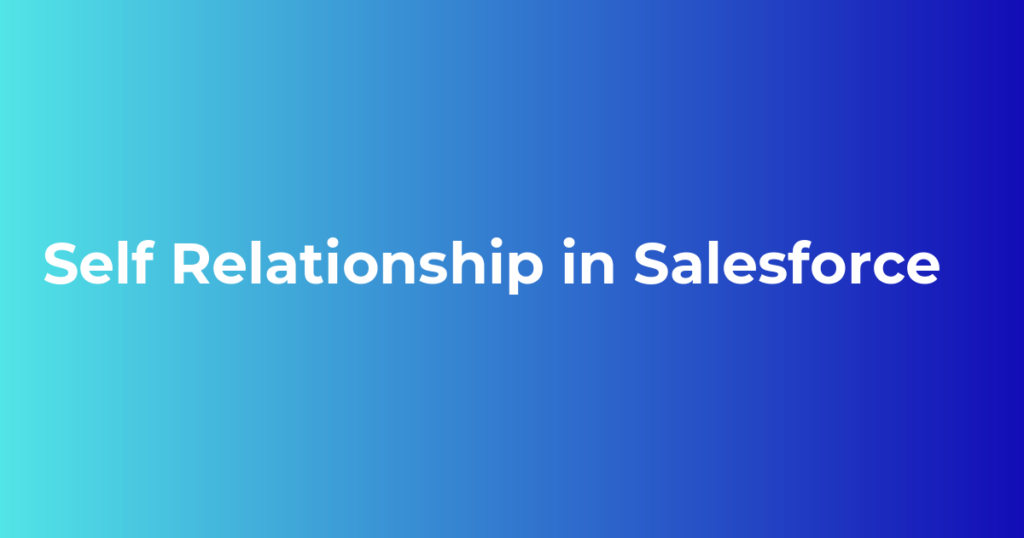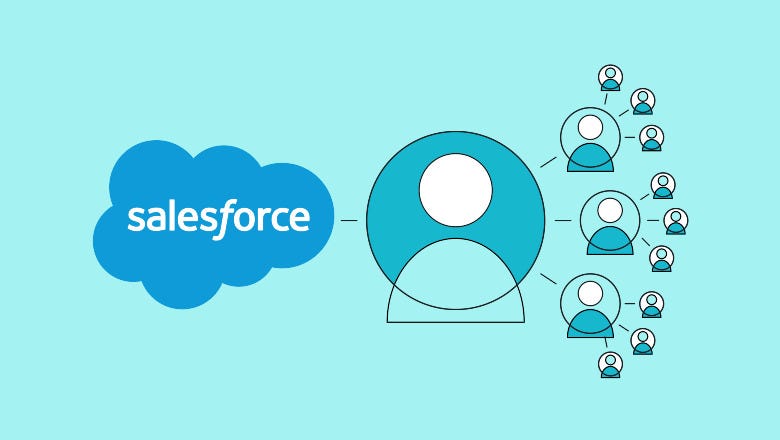
What Are Relationships in Salesforce?
Greetings, everyone; as the title implies, this blog post will educate you on the various kinds of relationships inside Salesforce and their characteristics.
Relationships, as they pertain to Salesforce, describe the bidirectional association or interaction between two or more objects. If two objects in Salesforce need to be related to each other to function together, we may use relationships to establish a connection between them.
Relationships in Salesforce allow you to link different objects together to track and manage related data effectively. For instance, customers can be connected to their orders or contacts to their opportunities. Salesforce creates these links to ensure that data is connected and not segregated, giving you a comprehensive picture of your business operations and customer interactions.

In Salesforce, there are several types of relationships you can create. Each type serves a unique purpose and is used in different scenarios based on the organization’s requirements. Here are the top 6 different types of relationships in Salesforce:
- Master-Detail Relationship
- Lookup Relationship
- Many-to-Many Relationship
- Self-Relationship
- Hierarchical Relationship
- External Lookup Relationship
Let’s delve into each of these relationships in detail.
1. Master-Detail Relationship
The Master-Detail relationship is one of the most commonly used relationships in Salesforce. It creates a tight bond between the parent (master) object and the child (detail) object. Here are some key characteristics:
- Dependency: The detail record is always dependent on the master record. If the master record is deleted, all associated detail records are also deleted (cascading delete).
- Ownership and Sharing: The detail record inherits the master record’s sharing and security settings. This means that the master object controls the visibility and permissions of the detail object.
- Roll-up Summary Fields: Master-Detail relationships allow the creation of roll-up summary fields on the master object to aggregate data from the detail records (such as sum, average, min, and max).
Use Case
Consider a scenario where you have two objects: “Account” and “Invoice”. An Invoice (detail) cannot exist without an Account (master). If an account is deleted, all related invoices should also be deleted. This is a classic example of when a Master-Detail relationship is used.
2. Lookup Relationship

The Lookup relationship is more flexible than the Master-Detail relationship. It creates a loose link between two objects. Here are some key characteristics:
- Independence: The child record in a Lookup relationship can exist independently of the parent record. Deleting the parent record does not affect the child records.
- No Cascading Delete: Unlike the Master-Detail relationship, there is no cascading delete in Lookup relationships.
- Optional or Required: Lookup fields can be made mandatory or optional based on business requirements.
Use Case
Imagine you have two objects: “Contact” and “Department.” A Contact can be associated with a Department, but it can also exist without being linked to any Department. If a Department is deleted, its associated Contacts remain intact. This is a suitable case for a Lookup relationship.
3. Many-to-Many Relationship
Salesforce does not support many-to-many relationships directly out of the box, but they can be achieved using a junction object. A junction object is a custom object with two Master-Detail relationships. Here are some key characteristics:
- Junction Object: The junction object bridges the two objects you want to relate to.
- Flexibility: This type of relationship allows records of one object to be linked to multiple records of another object and vice versa.
Use Case
Consider the objects “Project” and “Employee.” A Project can have multiple Employees, and an Employee can be assigned to various Projects. To model this relationship, you create a junction object called “ProjectAssignment” that has Master-Detail relationships with both “Project” and “Employee.”
4. Self-Relationship

A Self-Relationship is a Lookup relationship to the same object. This type of relationship allows you to create a hierarchy within a single object. It is helpful for scenarios where records need to be related to other records of the same type.
Use Case
In an “Employee” object, you might want to relate each employee to their manager, who is also an employee. Creating a Self-Relationship lets you link employees to their respective managers within the same Employee object.
5. Hierarchical Relationship
The Hierarchical Relationship is a special Lookup relationship exclusive to the User object. It allows users to create a management chain (hierarchy) within the User object.
Use Case
You establish a reporting structure among users in an organization. For example, you can create a hierarchical relationship representing which user reports to whom, defining the organizational structure and chain of command.
6. External Lookup Relationship

The External Lookup Relationship links a Salesforce object to an external object. This relationship is beneficial in scenarios where data resides outside of Salesforce but needs to be related to Salesforce records.
Use Case
Suppose you have an external database with “Supplier” information and want to link this information to a “Product” object in Salesforce. By creating an External Lookup Relationship, you can connect Product records in Salesforce to Supplier records in the external database.
Understanding and utilizing the different types of relationships in Salesforce is essential for building a robust and interconnected data model. Every type of relationship has a purpose and works well in a different setting:
- Master-Detail Relationship is ideal for tightly coupled records with dependent data.
- Lookup Relationship offers flexibility for loosely linked records that can exist independently.
- Many-to-many Relationship enables complex associations through a junction object.
- Self-relationships and Hierarchical Relationships facilitate hierarchical structures within the same object or among users.
- External Lookup Relationship connects Salesforce records to external data sources.
By leveraging these relationships, organizations can ensure that their Salesforce data model accurately reflects their business processes and relationships, leading to better data management, reporting, and overall CRM efficiency.

